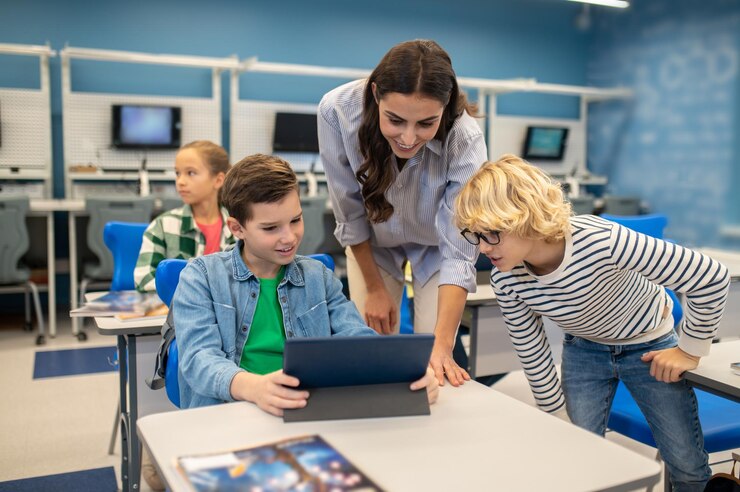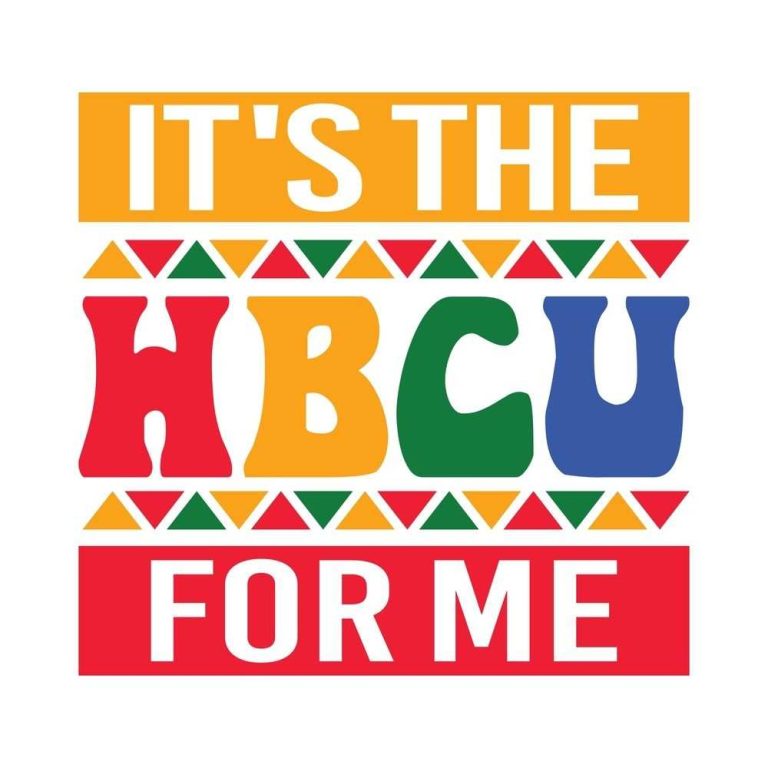Importance of Technology in Education Benefits, Tools & Impact
Many of today’s high-demand jobs were created in the last decade, according to the International Society for Technology in Education (ISTE). As advances in technology drive globalization and digital transformation, teachers can help students acquire the necessary skills to succeed in the careers of the future.
So this article will discuss how it helps to improve the quality of education provided.
How Important Is Technology In Education?
Nowadays, technology is crucial in learning as it enhances students’ learning capabilities and allows them to learn quickly. For instance, educators can utilize electronic devices such as smartphones, projectors, tablets, and even televisions to spice up their teaching methods and make the concept easier to grasp. Furthermore, students in today’s world can attend classes virtually, which in turn facilitates the globalization of education.
These days, classes are not solely taught through traditional ways.
- The new norm is incorporating virtaul classrooms, AR, robots, and videos.
- This set of tools creates a livelier learning environment by enabling teachers to have insight into a student’s performance and by helping foster a collaborating and inquisitive environment for students. However, it is important to remember that technology is not the goal but simply a means of facilitating education.
- It is only theorised as an ideal system until proper educators utilize it in such a way that remains focused on aiding the students.
- Lastly, technology lays a foundation for the students so that they are well-equipped for their future careers.
All in all, technology makes education exciting and bridges the gap between students and teachers.
The Benefits of Technology in Education
Technology is a versatile tool, one that can affect all aspects of education from assisting with the creation of curricula to facilitate communication, automating evaluations, and empowering learners to be more active in their own learning. When properly employed, educational technology can result in the following benefits:
- Enhanced Student Engagement
Educators have an advantage when it comes to using technology to boost education, as it allows for a gamified approach to create simulations and interactive content; these make it easier to capture students’ interest than the old ways
- Personalized Learning
Students can benefit greatly from adaptive technology as it creates an individual lesson plan for each of them according to their learning needs and pace, giving ample resources and assessments to help them succeed.
- Efficient Assessments & Feedback
In terms of saving time and improving learning engagement, digital quizzes, and automated grading systems can enable teachers to evaluate students’ progress and give timely feedback as they help deliver.
- Access to Diverse Resources
The internet is a treasure trove of rich resources, including videos, interactive content, and academic articles; technology enables students to learn from resources outside the textbooks, providing students with a wider range of learning materials.
- Collaborative Learning
Using various learning platforms, students can engage in group and board discussions; this enables students to practice teamwork and clear communication. Therefore, technology-derived tools enhance collaboration and teamwork.
- Streamlined Admin Tasks
Many daily activities, including attendance, lesson preparations, and even speaking with parents, are made simpler by using technology. Technology can be implemented to take over such activities, which will give teachers more time to teach.
- Data-driven Insights
Learning Management software and different educational applications allow users to view the analytics of their students’ activities. Such analytics are useful to teachers as they help them decide on certain issues.
- Flexible Learning
While using technology, it is possible to learn in the classroom setting and over a distance, which allows great versatility for both learners and teachers. This helps to meet the different preferences and situations of learners.
- Professional Development
Several education providers and degree awarding bodies provide online teacher-specific degree and certification courses, enabling educators to develop themselves. Teachers can also work with other professionals in the field and participate in webinars to stay in tune with what is happening in the industry.
Best Technology Tools and Apps for the Classroom
Technology incorporation in education improves both the teaching and the learning experience. Here’s a look at some of the most innovative and effective classroom technology tools and apps:
- ClassDojo: ClassDojo is an educational app that connects teachers, students, and parents. It tracks behavior, shares updates, enables communication, and supports digital portfolios.
- Kahoot: Kahoot is an interactive learning platform used in classrooms and workplaces. That allows the creation of games, learning quizzes, and polls to engage students and employees of any institution. Kahoot! It helps transform mundane lessons into competitive and fun experiences. Students can join the fun by utilizing a unique game code on their devices, which gamifies active engagement and teamwork.
- Padlet: Padlet is an online collaborative platform that allows users to create virtual boards with different items, whether documents or media. This tool is popular among teachers because they can use interactive brainstorming sessions, projects, and lessons with students more efficiently. Students and teachers can put up images, videos, notes, and even links, which makes learning more fun and interactive.
- Seesaw: Seesaw is an app that allows students to create a digital portfolio displaying their work. It enables teachers to set tasks, give feedback, and communicate with the students’ parents. Students can record videos, draw, and upload files, which promotes interactive learning and creativity, and also a stronger home-school connection.
- Google Classroom: Google Classroom is an online tool that streamlines communication, assignment, study material distribution, and file management for free. This platform works together with many Google services, which makes education easy.
- Flipgrid: FlipGrid is a discussion forum encouraging students to go on screen, share their opinions, and respond to questions through short videos.
- Socrative: Socrative is a classroom platform for creating quizzes and polls and conducting assessments in real time, enabling students to monitor their lessons and alter them as needed.
- Edpuzzle: Edpuzzle is an app that allows teachers to create customizable videos to accompany a lesson so the students can engage with the material at their learning rate.
- Quizizz: Quizizz is a fun application for kids and game-styled quizzes, making reviewing lessons and monitoring performance easier.
Breaking Down The Impact Of Educational Technology
Technology has constantly changed, with a paradigm shift in digital media.
Teachers must adopt the “newest” tools available for students to remain
motivated and interested. It has to be ensured that students are motivated
to explore and innovation is provided to them, as this will help engage them. Due to technological innovations, teachers cannot practice efficiently without using devices in their education.
Advanced Devices
There have been variations across the concerns of mediums due to technology enhancement. Initially, technology was difficult to access, but with its increased access, the need to integrate it into our day-to-day lives was created. As a result,
We started demanding the most advanced devices. Technologies have also been assimilated into the education sector, and computer science classes are now offered, whereby students are taught coding and how to use computers for their projects and work.
These tools greatly assist students in learning faster than they would naturally; therefore, the application of learning technologies has proved critical for students in the modern era.
Improved Teacher Productivity and Efficiency
One of the biggest advantages of using educational technology is that it boosts the productivity and efficiency of the teaching staff. Technology helps educators in numerous ways, as they do not have to put too much effort or time into doing tasks. For instance, Google Classroom or Seesaw makes it easy for teachers to prepare and share assignments with students, check on their progress, and give instant feedback.
Better Utilize Time
Rather than grading heap loads of examination papers, teachers can better utilize their time due to automated assessment apps like Quizizz and Socrative, which have taken most of the workload away from teachers. Furthermore, Communication with students and parents is made easier through websites such as ClassDojo, allowing quicker Communication and processing of updates and feedback.
Teaching Approach
The resources available through the internet tend to make teachers more effective as several lesson plans, videos, and online tools make the class more enjoyable for students. Moreover, educators can also use data to identify how students performed and alter their teaching approach to the child.
Thus, educational technology appears to improve classroom management, lessen educators’ administrative workload, and foster a more active learning environment for students.
Become a Leader in Enriching Classrooms through Technology
Teaching today is highly unique thanks to both new generations of students and novel advancements such as technology integration.
Teachers’ efforts have made a wide variety of technological tools and resources available to students and educators, enabling ways to be creative and put ideas into practical use. As such, below are the steps required to lead in enriching classrooms through technology.
- Be Updated and Informed: Always do your best to be in touch with the tech and share information with peers and students regarding the tools they have or could have.
- Encourage a Device Ready Classroom: Allow students to obtain devices and apps for their learning.
- Use Technology in All Subjects: Don’t use Technology just in its pertinent areas.
- Encourage Working Together: Promote the idea of having the same tools, Google Docs, Padlet, Flipgrid, and the like, and be inventive in them.
- Use Data to Inform Teaching: To improve teaching and learning, educators should examine student achievement information and adjust their instructional strategies.
- Promote Digital Citizenship: Teach students the importance of using Technology professionally.
- Collaborate with Fellow Educators: Collaborate with teachers and participate in relevant workshops to foster technological sharing of ideas.
- Encourage Student Agency and Ownership: Students should be allowed to have control over their learning through digital tools and projects.
Final Thoughts About Technology In the Classroom
The tools that technology provides to students when conducting tasks in class can be advantageous. Students can become completely absorbed in lessons which are important in understanding the content. Teachers can utilize it effectively to make their explanations clearer and give them a different context.
Teachers’ competence cannot be supplanted by technologies but, certainly, they assist teaching and make education more informative and exciting. While technology is not a replacement for good teaching, If teachers are able to follow the modern trends, many problems in education can be resolved.
Quick Tip:Use technology as a tool, not a crutch—balance tech with traditional teaching for the best results!
FAQs:
What is technology used for in the classroom?
Technology is used for interactive learning, creating assignments, tracking progress, and making lessons more engaging with tools like apps, videos, and online platforms.
What are the advantages and disadvantages of technology in the classroom?
Advantages: It makes learning fun, accessible, and personalized.
Disadvantages: It can be distracting and create a digital divide for students without device access.
What is the impact of technology on teaching and learning?
Technology helps teachers create more engaging lessons, provides instant feedback, and allows students to learn at their own pace, improving overall learning.
Is technology in classrooms good or bad?
Technology in classrooms is generally better, as it enhances learning and teaching, but it should be used wisely to avoid distractions and ensure all students have access.
Do teachers like technology in the classroom?
Many teachers like using technology as it makes teaching easier, more interactive, and more efficient, though some may find it challenging to adapt to new tools.


